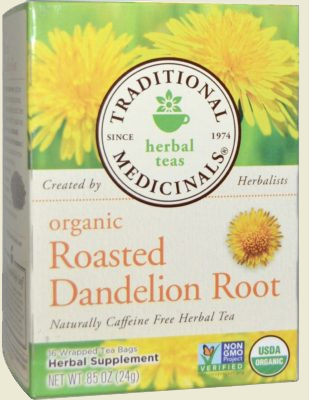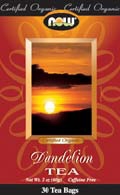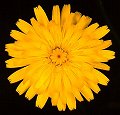What Is A Dandelion?
Now is a good time to touch on some distinguishing identifying plant characteristics!
Dandelions (Taraxacum officinale)
- official (designated Latin name) medicinal and nutritive qualities have been treasured and trusted for millennia.
- are common plants, but not ordinary.
- have non-edible uses like for dye, and many edible uses, including salad, cooked green, cooked vegetable, fritters, coffee, and…TEA!!!
- grow in mesophytic, xerophytic and hydrophytic habitats (grow in moderately moist, dry, and wet conditions and environments).
- range worldwide from the arctic to the tropics, especially in sunny areas.
- thrive in flower beds, lawns, pastures, meadows, roadsides, moist/open places.
- solitary yellow flower heads grow atop unbranched, hairless, leafless, milky, hollow stalks that later yield downy white tufted “parachute” seedballs.
- outer bracts (sometimes mistakenly called sepals) of its many-rayed yellow flowers are reflexed downwards.
- deeply notched lance-shaped leaves have irregular lobes and jagged margins.
- leaves and flower stalks all—every last one of them!—grow straight out of the ground directly from the taproot in a basal rosette configuration.
- reach a height of about 2-18 inches (5-45 cm.).
The descriptive name of the plant comes through the Middle English form of dandelion, dent-de-lioun, borrowed from the Old French dentdelion, from Medieval Latin dēns leōnis, literally, “tooth of the lion,” (from the sharply indented leaves of the plant) < Latin dēns, dent-, tooth [cf. dental, dentist] + Latin leōnis, genitive of leō, lion [cf. Leo, lion]. The word dandelion occurs in an herbal written in 1373, and in a proper name (Willelmus Dawndelyon) in a document dated 1363. Numerous folk names for this widely-used herb identification include bitterwort (taste), blow ball (and make a wish), cankerwort (natural remedy), clock flower (to “tell time”), doonheadclock, lion’s tooth, priest’s crown, pissabed (diuretic proterties), puffball, swine snort, wild endive, and yellow gowan (yellow kind of a common daisy).




April 25th, 2010 at 12:01 pm
Hi, what a wonderful, informative resource for a plant everyone has been introduced to one way or another!
Thank you very much.
This spring the dandelions that appeared along with borage plants in my flower bed grew enormous. The two types of plants grew over 3 feet tall. It made me question if I am identifying the dandelion correctly. They are in a somewhat protected area with bamboo fencing behind them. What do you think? It fits all the descriptions. thanks,momo